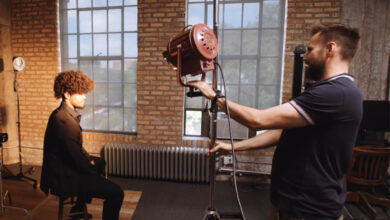Photography Critics: Why You Shouldn’t Be One and What You Should Be Instead

Criticisms of photography are commonplace. Sometimes it’s invited and genuine, sometimes it’s not. How you decide to give or take it can affect your self-esteem as a photographer. Moreover, it says a lot about your own creativity. Here’s how to appreciate criticism and avoid becoming a critic.
We should welcome constructive criticism. It happens when we ask talented photographers whose work we respect to help us improve. We listen with gratitude to those we have asked to review our work. Furthermore, they provide helpful feedback that they compassionately provide so we can improve.
The Rise of the Critics
Unfortunately, some make uninvited criticism anonymously and maliciously. It’s usually because some people are jealous of other people’s success. Therefore, they can only try to make up for their shortcomings by trying to take down people who are more successful than they are. Besides being poor photographers, they always lacked the ability to write a coherent critique. Instead, they threw insults. All they succeed in doing is revealing their limited intelligence. Sadly, most creators face these attacks from time to time.
The tables are against them. No matter how hard they try to hide their identity, it’s usually easy to find out who they are. Even when using an anonymous account, they can still be identified. I already know the name and address of a troll who tried to attack me recently. Sure, their portfolio is weak. Moreover, more and more people are going to jail or paying huge compensations for this unwanted behavior. Be warned!
Your photographic work may also be criticized by those in power. There are a lot of self-appointed judges with an arrogant illusion of importance out there. You can easily spot them as they don’t realize their opinions are just opinions and have no real authority. Therefore, their uninvited criticism is unwarranted and can be ignored. If someone attacks your work or worse, you, that says more about them than you or your photography.
There are still many people who never have anything nice to say. The negative comments of these constant detractors are tedious. Once we’ve heard them whine a few times, we tend to ignore them.
All of the above are examples of critics. They are the ones who give shoddy criticism.
The Return of Talented Critics
However, we should always treat sincere criticism given with compassion as valid and as an opportunity for improvement, artistically or personally. If criticism is constructive and designed to help us — we all make mistakes from time to time — a healthy approach is to appreciate it being given in a kind spirit. Then we can absorb what they say. Most of us try to learn from our mistakes and raise our hands to admit we were wrong. Thanking reviewers for their help is always the way forward.
Sometimes, we don’t realize what’s going on with our photography. There is a reason behind that, and it has to do with the way our minds work. We humans repeat the same patterns of behavior throughout our lives. If those models were good, we would quickly recognize that and deliberately continue to do so. However, if the sample is bad, it will be harder for us to determine the cause. So, not knowing why things went wrong, we repeat what happened before. Gradually, the lessons in life get bigger and bigger, hitting us harder each time until we figure out what’s wrong and hopefully change.
The same applies to creative skills, including photography. Like the lessons in life, it is others who help us see our mistakes. We don’t necessarily realize where we’re going wrong until someone comes along and wants to help guide us in the right direction. So, constructive criticism given with compassion is essential for improvement.
For example, I was going on a picnic when I was 10 years old. A teacher saw me photographing landscapes, which I did without instruction for three years. Looking back now, I know he might have found my photos better if I had taken them in a different way. He said that I should include some interest in the foreground to add depth to the photo. Then he mentions dividing the image into three parts and using leading paths. Looking back, I can see that his impromptu teaching was given with a real desire to help me progress. That gentle lesson meant I learned something new and prompted me to learn more about photography.
Years later, many of my seascape shots exclude subjects in the foreground and focus on the shape of the subject on the horizon, which I placed in the center of the frame, choosing the degree of symmetry rather than the vertical directions. other layout methods. It’s usually an island or headland that I aim for, and my foreground is either unremarkable or has no lines to direct my eyes to the image. I’m intentionally avoiding depth and uneven proportions because that’s not what the photo claims. However, without learning the background my teacher gave me, I wouldn’t be able to make that composition choice.
Trouble with listening to criticism
There’s a problem with always listening and accepting criticism about our photos. If we always followed the advice given, we would all take the same pictures to try to meet the aesthetic ideas of others. That prevents us from testing and branching.
Were the test images commercially or aesthetically successful for others? Unnecessary. But that does not matter. Not every photo you take has to be a winner. Many of the photographers I talk to find their favorite photos less popular than their more conventional ones. Think of your test shots as album tracks rather than hit singles. Those who are less fond of those photographs probably have more sophisticated and sophisticated tastes.
Furthermore, remember that someone’s appreciation or dissatisfaction of any photo is subjective. Just because someone doesn’t like what you’ve done doesn’t mean there’s something wrong with your photo.
How to criticize other people’s work?
So, what should you do if asked to critique or rate someone else’s work?
First, say thank you for being invited to do so; it’s a real privilege to be trusted with that. Then take a moment and think about what the photographer is trying to achieve. Have they succeeded in doing so, and why? Only then, ask the photographer what they are aiming for. Unless they’re trying to meet the specifications of a regulatory brief or task, chances are what they’re trying to accomplish is very different from what you imagine.
Sadly, many people today are unable to acknowledge their subjectivity and accept that it’s okay to have different opinions. They are not prepared to discuss a topic, but have to debate it. This has affected photography, and as a result creativity suffers. They are critics, not critics. So when starting to form your opinion, keep in mind that your opinion is only opinion and therefore susceptible to personal bias.
Always start by discussing the positives of the image, relating it to both their point of view and yours. Start by asking the photographer what they think the positives are, then add more. Next, ask them how they might approach the problem differently. Discuss other ways to achieve the desired result. This is where you can make suggestions, but put them in the form of questions: “Have you thought about…?” or “What if…?” When people dictate what the photo should look like, they fail.
That discussion could cover the composition of the photo, what’s in the frame and what’s not, camera settings, the story being told, etc. It’s your job to let the photographer consider approaches. approach other people and do not dictate how they should be.
Summarize the discussion and end by congratulating the photographer, pointing out what they did well.
A critic will always try to destroy you, while a talented critic will help you become better than them.




